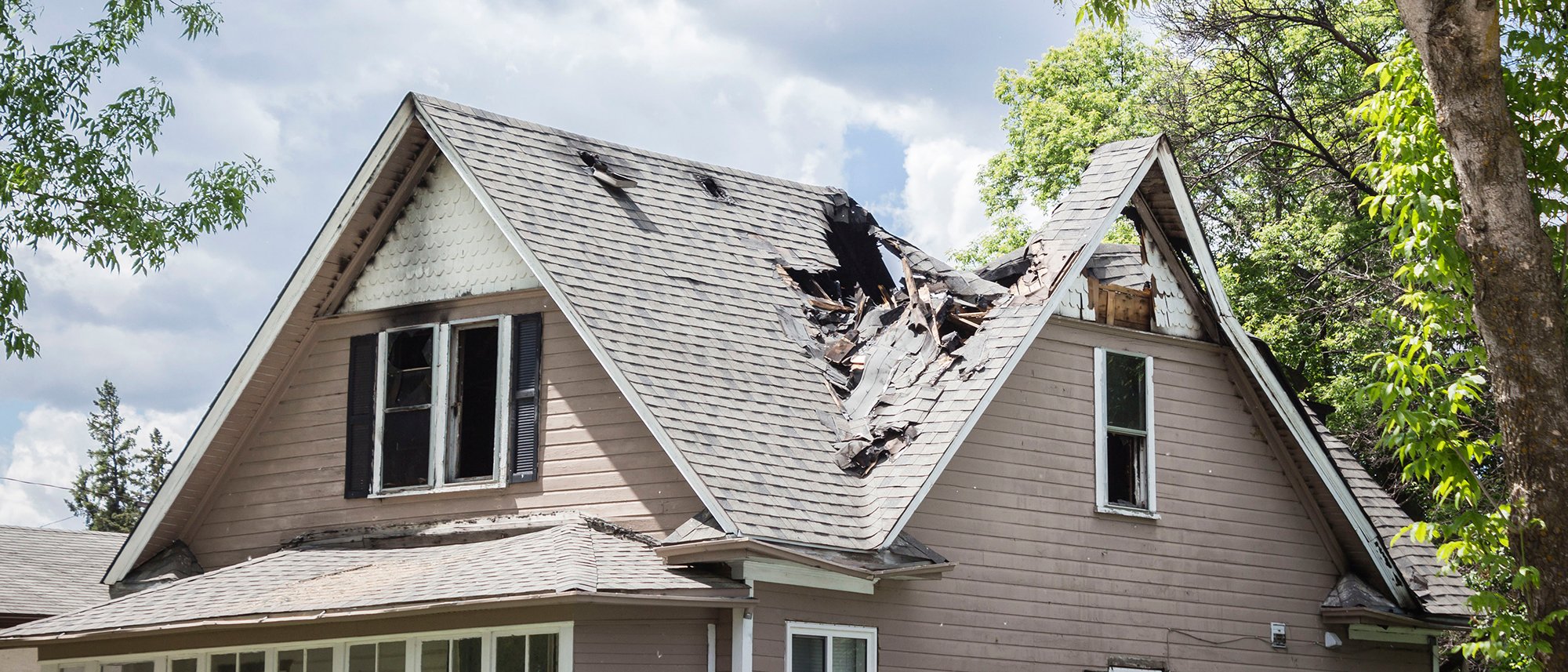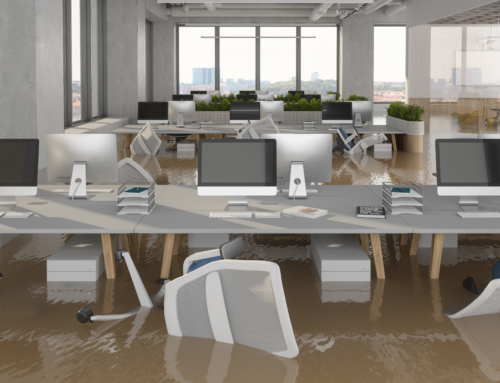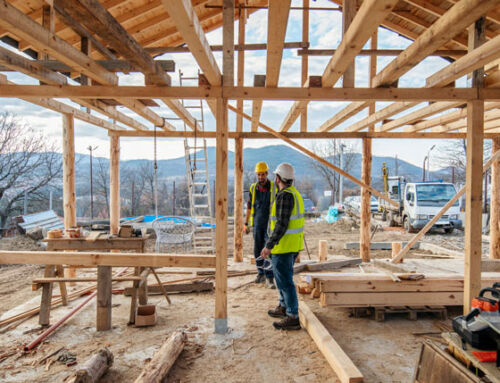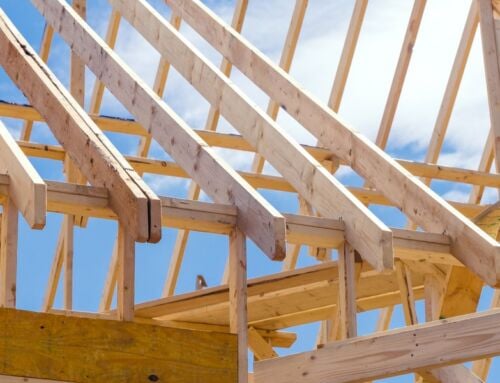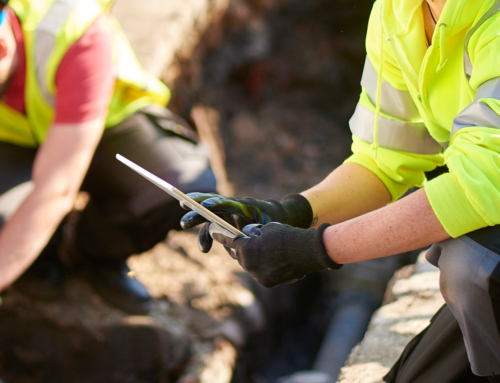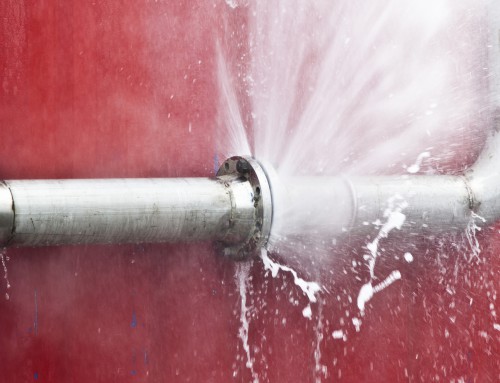Strong winds have the strength to blow the roof off your building and dealing with roof damage can be a disruptive and costly matter. Low-pressure areas are more prone to severe windstorms and tornadoes. These weather conditions produce high winds and rain that can damage your roof and disrupt your business operations. But property damage from high winds can occur in any geographical area, even if it doesn’t occur often.
We’ve compiled some best practices to help protect your building against roof damage from high winds.
Roof design and construction
It’s important to choose the appropriate roof design and construction specific to your operations for stability, durability, and damage resistance in high wind areas.
Roof pitch refers to the steepness and angle of roofs. Commercial buildings generally have either flat roofs, low-slope roofs, or steep-slope roofs, residential apartments and office buildings tend to only have flat roofs, and residential homes are commonly seen with steep-slope roofs.
Here are some common roof constructions that you may want to consider:
- Built-Up Roofing (BUR) membrane – This is composed of layers of roofing asphalt and asphalt felts which are installed so that multiple interwoven plies form a roofing membrane.
- Metal roofing – A metal roof is a roofing system made up of metal pieces or tiles. Metal roofing is a popular commercial roof type because of the various metal materials available.
- Modified bitumen (MB) roofing – MB is asphalt-based and designed for buildings with flat or low-slope roofs. It is made of asphalt combined with polymerized rubber or plastic, then reinforced with fiberglass to create a rugged yet flexible waterproof membrane.
- Thermoset roofing membrane – Thermoset roofing membrane is an extremely durable synthetic rubber material widely used in low-slope buildings.
- Green roofing – Green roofs may be the most versatile kind of commercial roof available. A green roof is a layer of vegetation planted over a waterproofing system that is installed on top of a flat or slightly sloped roof.
How do high winds blow off roofs?
When high winds travel over your roof, it creates a low pressure in the atmosphere. The pressure around your roof is lower than the atmospheric pressure below it. Concurrently, when air currents enter your building from an open window or door, it creates pressure inside that causes an upward thrust of air. This suction effect causes the roof to lift and blow off in the wind. The pressurized air inside your building is combined with the powerful force of wind pulling on the outside to lift your roof off. This is known as Bernoulli’s principle.
Ways to prevent roof damage
- Ensure the roof is installed according to code.
This is particularly important with older roofs because a previous owner may not have hired a reliable, licensed roofer. - Seal your roof.
Ensure the edge of the roof is sealed with a roofing cement to prevent gale-force winds from penetrating underneath. In addition, make sure the roof decking is also sealed. - Install windproof sheathing.
When installing a new roof, make sure that the sheathing is windproof. Roof sheathing is the second line of defense against heavy winds. - Maintain your roof coverings.
Inspect the roof regularly for cracked, worn, curled or missing roof coverings, as well as signs of water damage on the underside of the roof. This will help reduce the risk of having your roof blown off due to deteriorating components. Replace the roof as it approaches the maximum lifespan for its roofing material. - Maintain your roof supporting frame.
Inspect the structure regularly for cracked, worn, or rotting trusses and rafters. Also regularly inspect the supporting frame. - Add roof/hurricane clips.
Roof/hurricane clips are galvanized steel clips that attach your roof to the rafters or trusses of your building to protect the roof from blowing off in severe weather conditions. There are different uplift protection strengths of these clips, so select your clip strength according to your local wind danger. Local wind danger can be calculated using the Government of Canada’s Wind Load Calculator for roof cladding and vegetated roof assembly. - Rope your roof down.
For smaller commercial low-rise buildings, if a windstorm is predicted to hit your building, anchor your roof tightly in place by holding your roof down with a system of ropes. The ropes are attached at opposite ends of your building to concrete blocks on the ground.
What to do after high winds or storms
After a storm, it may be difficult to identify the severity of damage done to your roof, especially if you are only inspecting from the ground. Inspect and document as much as you can from a safe distance. Your roof may have minor abrasions, loose components, areas missing asphalt, and detached cladding or other detached roofing materials. Fallen objects or debris from affected trees and powerlines may have damaged your roof as well.
Hire a licensed and professional roofer to inspect your roof, especially from an elevated angle. When it is safe to do so, clean up debris from your roof and yard. Check inside your building for leaks, wall discoloration, and other damages.
Ensure that you’re protected
Despite your best efforts, sometimes things can still go wrong. That’s when insurance can be helpful. To learn more about how a tailored policy can help protect you, your employees, and your bottom line, visit our Commercial Property Insurance Page.
This blog is provided for information only and is not a substitute for professional advice. We make no representations or warranties regarding the accuracy or completeness of the information and will not be responsible for any loss arising out of reliance on the information.
